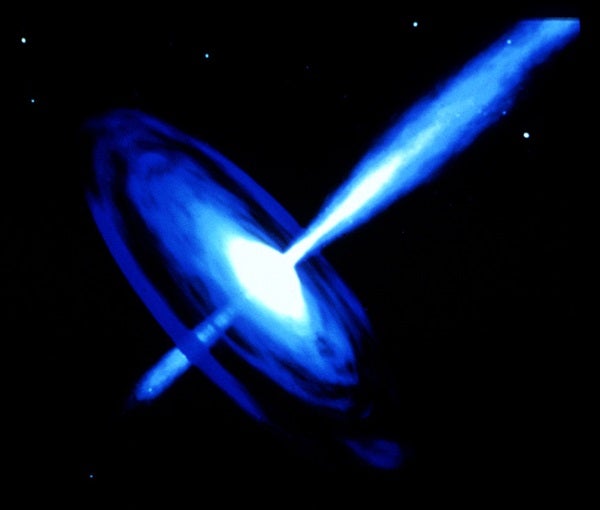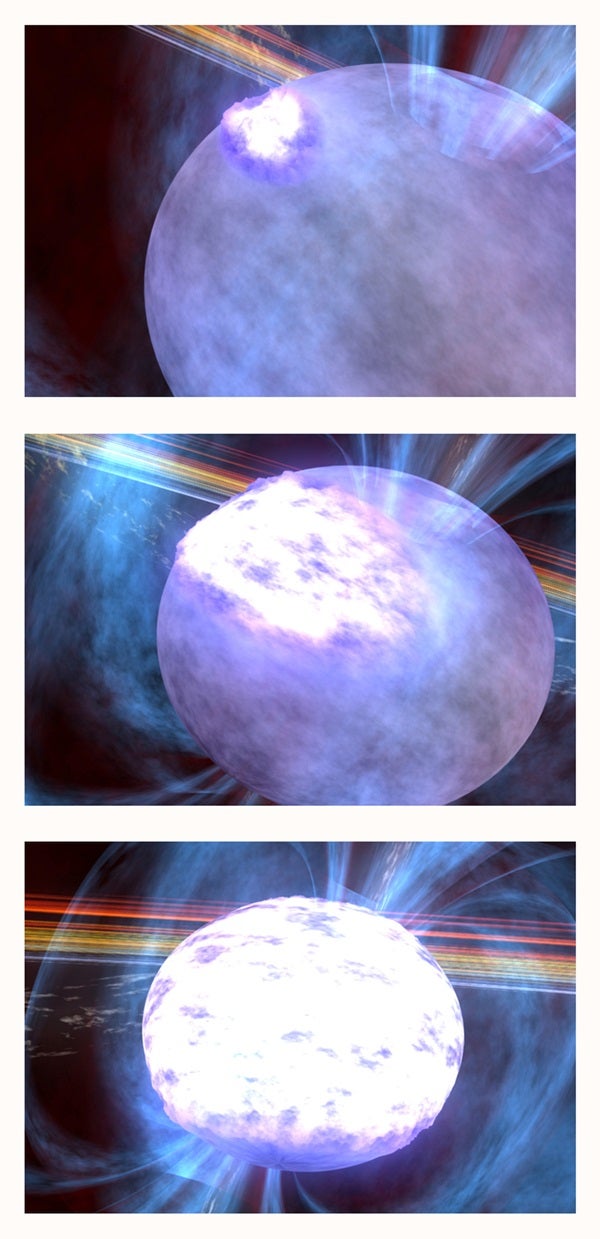The easiest way to interpret gravitational interactions, Einstein said, is to think of the space-time continuum as a stretchable material that bends as massive objects “sit” inside it. While this two-dimensional analogy does not represent what is happening in four-dimensional space-time, it serves as a capable model.

Bringing the universe to your door. We’re excited to announce Astronomy magazine’s new Space and Beyond subscription box – a quarterly adventure, curated with an astronomy-themed collection in every box. Learn More >>.
When you stretch a pliable plastic sheet tautly, and you place a softball on it, the gravity well around the ball pushes the sheet downward and curves the fabric. The same thing happens in the four-dimensional universe. Near actual massive objects that have large gravitational pulls, the “fabric” of space-time curves and stretches.
Massive objects also cause another effect in the fabric of space-time. Just as a boat creates waves on a lake as it slices forward through the water, stars and other bodies in the universe create ripples in the fabric of space-time as they move. Astronomers call these ripples gravitational waves.
Immense objects like black holes create larger gravitational waves than less massive objects. Likewise, objects moving rapidly through space create more sustained gravitational waves than slower moving ones. When these gravitational-wave signals finally reach Earth, however, they are extremely weak. Like waves in water, gravitational waves diminish as they move outward from their origin. So gravitational waves prove difficult to detect and interpret once they reach us from a variety of distant locations.
But after years of searching, in late 2015, researchers finally detected the first clear signal of a gravitational wave passing through Earth. This signal, dubbed GW150914, originated from the merger of two black holes with a combined mass of roughly 60 suns. Since then, scientists have confirmed gravitational-wave signals from four additional merging pairs of black holes, as well as a merging pair of neutron stars for good measure.
With these detections, astronomers now know the interaction of two compact and massive bodies usually produces gravitational waves. The interactions can be between binary black holes or neutron stars, but they also may be between merging galaxies or normal stars simply encountering each other.
The Advanced Laser Interferometer Gravitational-wave Observatory (LIGO), a joint project between MIT and Caltech, has two locations: one in Hanford, Washington, and the other in Livingston, Louisiana. Teaming up with LIGO is the French- and Italian-led Virgo collaboration, which operates the Advanced Virgo interferometer, a third gravitational-wave detector that enables researchers to better pinpoint the sources of gravitational-wave events like those found in recent years.
Above all these Earth-based projects, the European Space Agency (ESA) plans to launch the Laser Interferometer Space Antenna (LISA) in 2034. To test the space-based technologies needed for such an enormous mission, ESA, with the help of NASA, launched the LISA Pathfinder satellite in 2016. Since Pathfinder far exceeded expectations, the LISA project will likely provide the best observatory for detecting gravitational waves and will give astronomers significant clues about the interaction of matter and space-time, and how the universe came to be.












